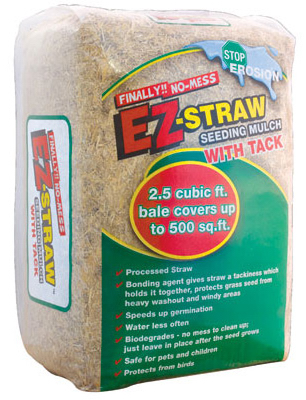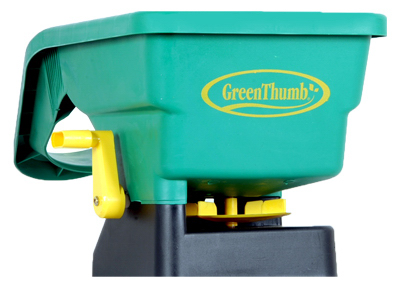Lack of surface prep
Throwing down grass seed on hard, compacted soil means you’ve started your lawn renovation project off on the wrong foot. Spreading seed on a mat of thatch will also prevent you from having successful results. When grass seed sprouts and sends out its first little root fibers, it needs to have contact with soil that’s recently been loosened up. YES, it’s a lot of work, but the alternative will leave you a fraction of the results. Why waste that money?
A steel rake is great for de-thatching.
SALE $19.99
Regularly $29.99.
A bow rake is useful for spreading compost & topsoil.
SALE $24.99
Regularly $42.99.
Wrong Seed
All grass seed is not the same. Some varieties require more water than others to thrive in our KC Metro climate. Not only that, some varieties require a lot of sunlight whereas others won’t tolerate it. There are also variations in “quality” of bags of seed.

Tip:
All grass seed is required to have a breakdown of the contents. Look on the label for 0% “Crop” and 0% “weed seed” on the label. While 2% crop or weed seed doesn’t sound like a lot, they can create lot of work and headaches to get rid of when they germinate.
Under-estimating the Project
Lawn maintenance isn’t difficult, but it does take time. After the initial effort of prepping and seeding, prepare to spend a little time over the next 4-6 weeks nursing your new grass— more the beginning, and less as it grows stronger and can go longer between waterings.

Skipping the top-dressing
Grass seed needs to stay moist, so it’s critical to provide your baby grass a little protection from the sun and wind that can quickly dry out the surface of the soil. Taking the time to cover the seed will eliminate the need to water more than once a day, and dramatically speed up the germination process.
For erosion control when seeding bare areas, we suggest
Watering Wrong
Watering is critical for new grass development. Unlike watering an established lawn, new grass seed requires frequent watering… usually every day—sometimes twice a day— for the first 3-4 weeks. The goal is to keep the surface of the soil moist at all times.
Stay disciplined. Keep watering. Don’t get impatient or discouraged when you don’t see seeds sprouting in a few days because it will take time.
More seed isn’t better.
Apply the seed at the proper rate. Putting it down too heavily may look good at first, but in the long run, too many plants per square foot leads to overcrowding and disease issues.
A hand held spreader is a relatively inexpensive way to make sure the seed goes down evenly and most come with a setting ideal for grass Seed.
In this photo, the new grass may look great, but it will be more susceptible to disease later because too much seed was used.

Did you know?
Fescue, Rye, and Bluegrass are much different in size, and the pounds you use per square foot varies dramatically by variety. Make sure you use the setting for the type of seed you are applying.
If you have any questions along the way, feel free to call any of our stores and talk with one of our experts in Garden Pharmacy or ask our garden advisor online (select “Garden Advice”).





